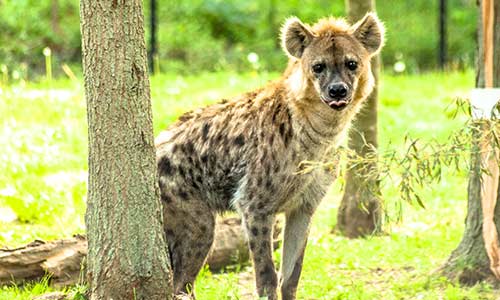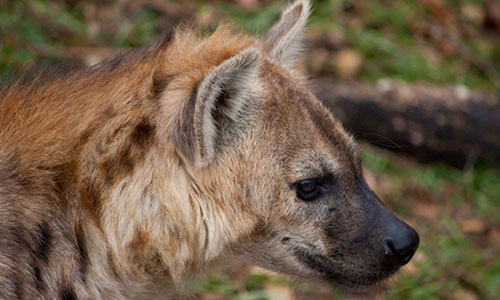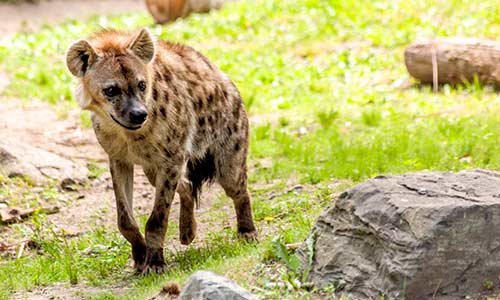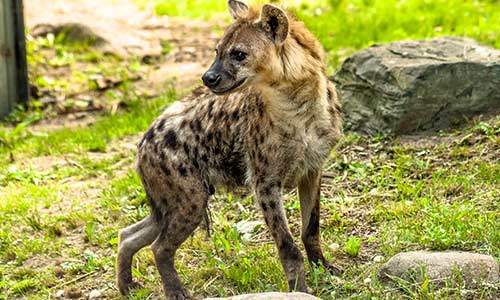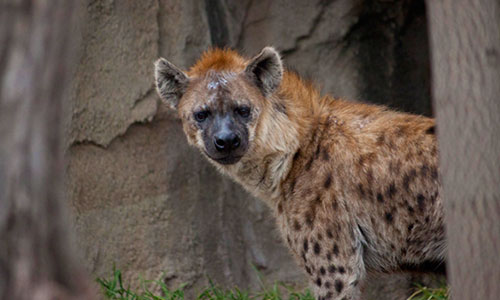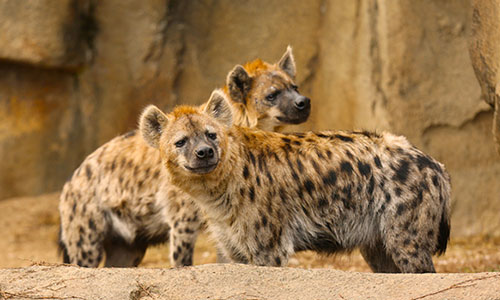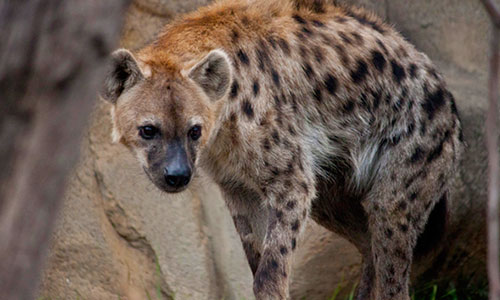Spotted hyenas make exhibit debut at Franklin Park Zoo
Tuesday October 21, 2014
Thika, age 15, and Kai, age 5, are settling in to their new home at Franklin Park Zoo. The hyenas’ exhibit debut marks a first for Franklin Park Zoo, which has not previously exhibited this species.
“We are thrilled to share the news of these exciting additions to the animal family at Franklin Park Zoo. People are sure to be fascinated by these amazing animals with their distinctive laugh and vocalizations. This is a species we have had under consideration to bring in for many years. Their arrival presents a great opportunity for us to educate visitors of all ages about the important role these animals play in healthy ecosystems,” said John Linehan, Zoo New England President and CEO.
The spotted hyenas, who arrived from Lincoln Park Zoo in Chicago, can be seen in the exhibit that was previously occupied by African painted dogs. Because African painted dogs are pack animals, the decision was made to relocate Brahma, the lone African painted dog at Franklin Park Zoo, to the Cincinnati Zoo and Botanical Garden. Brahma moved to his new home earlier this summer to be paired with a female for breeding.
Spotted hyenas are native to sub-Saharan Africa, excluding the Congo rainforest, southern Africa and Madagascar. In the wild, hyenas live in groups called clans, which are dominated by females. These clans will defend their territories against other clans. Spotted hyenas scent mark the borders of their territory and try to have a centralized den situated on high ground.
These animals are noted for their distinctive vocalizations used for communication. Vocalizations include cackles, howls, yells, whoops and other sounds which are inaudible to humans. Spotted hyenas also use body language and posturing to communicate with each other.
When hunting alone, these animals will prey on smaller mammals, birds and reptiles. When hunting in a group, hyenas can tackle large prey such as gazelles, wildebeest and zebras. While they will scavenge, most of their diet comes from active hunting.
Learn more about the spotted hyena in Franklin Park Zoo's Animals section.
Images courtesy of Lincoln Park Zoo

